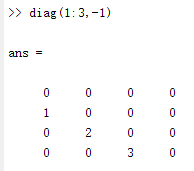Pytorch实现ResNet
一、ResNet网络介绍
-
ResNet在2015年被提出,在ImageNet比赛classification任务上获得第一名,目标检测第一名。获得COCO数据集中目标检测第一名,图像分割第一名。由于它“简单与实用”并存,之后很多方法都建立在ResNet50或者ResNet101的基础上完成的,检测,分割,识别等领域里得到广泛的应用。
-
ResNet残差结构图:

- ResNet网络结构参数列表:

-
ResNet网络的高点
- 提出residual结构(残差结构)
- 拱建超深的网络结构(突破1000层)
- 使用Batch Normalization加速训练(丢弃dropout)
二、ResNet网络的中心——残差学习
-
残差
残差是指对每层的输入做一个reference(X), 学习形成残差函数。
-
残差学习block的分支
- identity mapping:指的是图(一、2)右边那条弯的曲线。顾名思义,identity mapping指的就是本身的映射,也就是 x 自身
- residual mapping:指的是另一条分支,也就是 F(x) 部分,这部分称为残差映射
-
残差学习的定义公式
y = F ( x, { Wi }) + x
三、ResNet网络代码实现
-
ResNet网络模型
import torch import torch.nn as nn class BaicsBlock(nn.Module): # 主分支的卷积个数的倍数 def expansion(self): expansion = 1 return expansion def __init__(self, in_channel, out_channel, stride=1, downsample=None): super(BaicsBlock, self).__init__() self.conv1 = nn.Conv2d(in_channels=in_channel, out_channels=out_channel, kernel_size=3, stride=stride, padding=1, bias=False) # 不使用偏置,bias=False self.bn1 = nn.BatchNorm2d(out_channel) self.relu =nn.ReLU(inplace=True) self.conv2 = nn.Conv2d(in_channels=out_channel, out_channels=out_channel, kernel_size=3, stride=stride, padding=1, bias=False) self.bn2 = nn.BatchNorm2d(out_channel) self.downsample = downsample # 下采样参数,虚线的残差结构 def forward(self, x): # 捷径分支下采样参数保存变量 identity = x if self.downsample is not None: identity = self.downsample(x) x = self.conv1(x) x = self.bn1(x) x = self.relu(x) x = self.conv2(x) x = self.bn2(x) x +=identity x = self.relu(x) return x class Bottleneck(nn.Module): def expansion(self): expansion = 4 return expansion def __bool__(self, in_channel, out_channel, stride=1, downsample=None): super(Bottleneck, self).__init__() self.conv1 = nn.Conv2d(in_channels=in_channel, out_channels=out_channel, kernel_size=1, stride=1, padding=1, bias=False) self.bn1 = nn.BatchNorm2d(out_channel) self.relu = nn.ReLU(inplace=True) self.conv2 = nn.Conv2d(in_channels=out_channel, out_channels=out_channel, kernel_size=3, stride=stride, padding=1, bias=False) self.bn2 = nn.BatchNorm2d(out_channel) self.conv3 = nn.Conv2d(in_channels=out_channel, out_channels=out_channel, kernel_size=1, stride=1, padding=1, bias=False) self.bn3 = nn.BatchNorm2d(out_channel*self.expansion()) self.downsample = downsample def forward(self, x): identity = x if self.downsample is not None: identity = self.downsample(x) x = self.conv1(x) x = self.bn1(x) x = self.relu(x) x = self.conv2(x) x = self.bn2(x) x = self.relu(x) x = self.conv3(x) x = self.bn3(x) x += identity x = self.relu(x) return x class ResNet(nn.Module): def __init__(self, block, block_list, num_classes=1000, include_top=True): super(ResNet, self).__init__() self.include_top = include_top self.in_channel = 64 self.conv1 = nn.Conv2d(in_channels=3, out_channels=self.in_channel, kernel_size=7, stride=2, padding=3, bias=False) self.bn1 = nn.BatchNorm2d(self.in_channel) self.relu = nn.ReLU(inplace=True) self.maxpool = nn.MaxPool2d(kernel_size=3, stride=2) self.layer_1 = self.make_layer(block, 64, block_list[0]) self.layer_2 = self.make_layer(block, 128, block_list[1], stride=2) self.layer_3 = self.make_layer(block, 256, block_list[2], stride=2) self.layer_4 = self.make_layer(block, 512, block_list[3], stride=2) if self.include_top: self.avgpool = nn.AdaptiveAvgPool1d((1,1)) self.fc = nn.Linear(512 * block.expansion(self), num_classes) for m in self.modules(): if isinstance(m, nn.Conv2d): nn.init.kaiming_normal_(m.weight, mode='fan_out', nonlinearity='relu') def make_layer(self, block, channel, block_list, stride=1): downsample = None if stride != 1 or self.in_channel != channel * block.expansion(self): downsample = nn.Sequential( nn.Conv2d(self.in_channel, channel * block.expansion(self), kernel_size=1, stride=stride, bias=False), nn.BatchNorm2d(channel * block.expansion(self))) layers = [] layers.append(block(self.in_channel, channel, downsample=downsample, stride=stride)) self.in_channel = channel * block.expansion(self) for _ in range(1, block_list): layers.append(block(self.in_channel, channel)) return nn.Sequential(*layers) def forward(self, x): x = self.conv1(x) x = self.bn1(x) x = self.relu(x) x = self.maxpool(x) x = self.layer_1(x) x = self.layer_2(x) x = self.layer_3(x) x = self.layer_4(x) if self.include_top: x = self.avgpool(x) x = torch.flatten(x, 1) x = self.fc(x) return x def ResNet18(num_classes=1000, include_top=True): return ResNet(BaicsBlock, [2, 2, 2, 2], num_classes=num_classes, include_top=include_top) def ResNet34(num_classes=1000, include_top=True): return ResNet(BaicsBlock, [3, 4, 6, 3], num_classes=num_classes, include_top=include_top) def ResNet50(num_classes=1000, include_top=True): return ResNet(Bottleneck, [3, 4, 6, 3], num_classes=num_classes, include_top=include_top) def ResNet101(num_classes=1000, include_top=True): return ResNet(Bottleneck, [3, 4, 23, 3], num_classes=num_classes, include_top=include_top) def ResNet152(num_classes=1000, include_top=True): return ResNet(Bottleneck, [3, 8, 36, 3], num_classes=num_classes, include_top=include_top) -
ResNet网络训练(5分类的花分类)
from nlp.task.CIFAR10_try.ResNet import ResNet34 # ResNet本地导入,就是上面的网络模型导入 import os import json import torch import torch.nn as nn import torch.optim as optim from torchvision import transforms, datasets from tqdm import tqdm def main(): # 判断cuda? cpu? device = torch.device("cuda:0" if torch.cuda.is_available() else "cpu") print("using {} device.".format(device)) # 数据处理 data_transform = { "train": transforms.Compose([transforms.RandomResizedCrop(224), transforms.RandomHorizontalFlip(), transforms.ToTensor(), transforms.Normalize([0.485, 0.456, 0.406], [0.229, 0.224, 0.225])]), "val": transforms.Compose([transforms.Resize(256), transforms.CenterCrop(224), transforms.ToTensor(), transforms.Normalize([0.485, 0.456, 0.406], [0.229, 0.224, 0.225])])} # 设置路径 data_root = os.path.abspath(os.path.join(os.getcwd(), "../..")) # get data root path image_path = os.path.join(data_root, "data_set", "flower_data") # flower data set path assert os.path.exists(image_path), "{} path does not exist.".format(image_path) # 数据导入 train_dataset = datasets.ImageFolder(root=os.path.join(image_path, "train"), transform=data_transform["train"]) train_num = len(train_dataset) # {'daisy':0, 'dandelion':1, 'roses':2, 'sunflower':3, 'tulips':4} flower_list = train_dataset.class_to_idx cla_dict = dict((val, key) for key, val in flower_list.items()) # write dict into json file json_str = json.dumps(cla_dict, indent=4) with open('class_indices.json', 'w') as json_file: json_file.write(json_str) batch_size = 16 nw = min([os.cpu_count(), batch_size if batch_size > 1 else 0, 8]) # number of workers print('Using {} dataloader workers every process'.format(nw)) train_loader = torch.utils.data.DataLoader(train_dataset, batch_size=batch_size, shuffle=True, num_workers=nw) validate_dataset = datasets.ImageFolder(root=os.path.join(image_path, "val"), transform=data_transform["val"]) val_num = len(validate_dataset) validate_loader = torch.utils.data.DataLoader(validate_dataset, batch_size=batch_size, shuffle=False, num_workers=nw) print("using {} images for training, {} images for validation.".format(train_num, val_num)) net = ResNet34() model_weight_path = "./resnet34-pre.pth" # 官网权重:https://download.pytorch.org/models/resnet34-333f7ec4.pth assert os.path.exists(model_weight_path), "file {} does not exist.".format(model_weight_path) net.load_state_dict(torch.load(model_weight_path, map_location=device)) in_channel = net.fc.in_features net.fc = nn.Linear(in_channel, 5) net.to(device) # 优化器 loss_function = nn.CrossEntropyLoss() params = [p for p in net.parameters() if p.requires_grad] optimizer = optim.Adam(params, lr=0.0001) epochs = 5 best_acc = 0.0 save_path = './resNet34.pth' train_steps = len(train_loader) for epoch in range(epochs): # train net.train() running_loss = 0.0 train_bar = tqdm(train_loader) for step, data in enumerate(train_bar): images, labels = data optimizer.zero_grad() logits = net(images.to(device)) loss = loss_function(logits, labels.to(device)) loss.backward() optimizer.step() # print statistics running_loss += loss.item() train_bar.desc = "train epoch[{}/{}] loss:{:.3f}".format(epoch + 1, epochs, loss) # validate net.eval() acc = 0.0 # accumulate accurate number / epoch with torch.no_grad(): val_bar = tqdm(validate_loader) for val_data in val_bar: val_images, val_labels = val_data outputs = net(val_images.to(device)) # loss = loss_function(outputs, test_labels) predict_y = torch.max(outputs, dim=1)[1] acc += torch.eq(predict_y, val_labels.to(device)).sum().item() val_bar.desc = "valid epoch[{}/{}]".format(epoch + 1, epochs) val_accurate = acc / val_num print('[epoch %d] train_loss: %.3f val_accuracy: %.3f' % (epoch + 1, running_loss / train_steps, val_accurate)) if val_accurate > best_acc: best_acc = val_accurate torch.save(net.state_dict(), save_path) print('Finished Training') if __name__ == '__main__': main()
**Tips:**Batch Normalization:是使我们的一批(Batch)feature map 满足均值为0,方差为1的分布规律。在使用BN时,训练时将training设置为True,在验证时将training设置为False。将BN层放在conv层与ReLU层之间,并且conv层不能使用偏置。
[外链图片转存失败,源站可能有防盗链机制,建议将图片保存下来直接上传(img-bxGTYEI2-1618642831083)(image/image-20210413124110903.png)]




